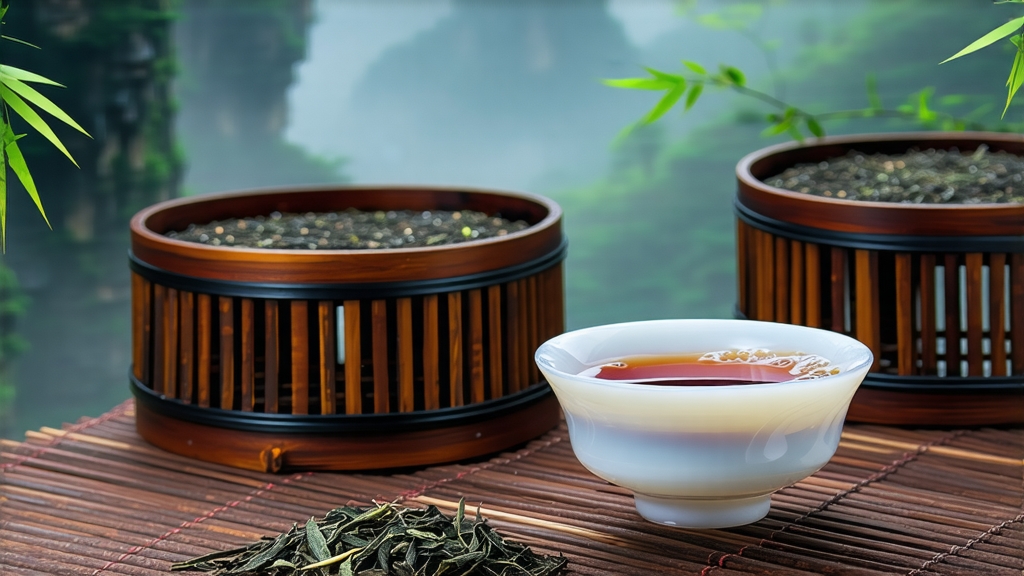
Long before Assam, Ceylon or Keemun ever appeared on a London tea table, there was Lapsang Souchong. International drinkers often treat it as an eccentric curiosity—an assertively smoky leaf that seems better suited to a campfire than a porcelain cup—yet this small, black twist of foliage from the Wuyi Mountains of north-west Fujian is the genetic and cultural forebear of every modern black tea on earth. To understand Lapsang Souchong is to hold a mirror to the entire story of how China taught the world to drink black tea.
-
A leaf born in exile
Legend places the birth of Lapsang Souchong in 1568, late in the Ming dynasty, when a passing army commandeered Tongmu village during the spring harvest. Eager to prevent the fresh leaves from withering away, farmers hastily dried them over green pine fires so they could be sold at the next market. The foreign merchants who tasted the result were enchanted by the resinous perfume and copper-red liquor; they returned the following year asking for “the smoked tea from Lapu Mountain,” hence the name Lapsang—”Lapu” being the local dialect rendering of “Wuyi”—and “Souchong,” referring to the fourth or fifth leaf normally discarded for green tea but perfect for this new, fully oxidised style. Within decades the Dutch East India Company was shipping it to Amsterdam, and by 1604 it had become Europe’s first commodity labelled “Bohea,” the anglicised pronunciation of “Wuyi.” All subsequent black teas—Congou, Pekoe, Orange Pekoe—were merely attempts to replicate or refine the process that began in Tongmu. -
Terroir that tastes of pine and stone
Tongmu lies inside a national nature reserve at 27° N latitude, where the Min River cuts a misty gorge through granite cliffs. Day-night temperature swings of 15 °C force the tea bush (a small-leaf cultivar of Camellia sinensis var. sinensis known locally as xiao ye zhong) to grow slowly, thickening the cell walls and concentrating aromatic oils. The forest is 86 % pine: Masson, Huangshan and Chinese red pine exhale terpenes that drift into the leaf surface, so even an unsmoked grade carries a whisper of resin. The soil is a shallow, acidic sandy loam rich in quartz; drainage is instant, stressing the roots and further intensifying flavour. No pesticide is ever used—biodiversity is so complete that pest insects never reach outbreak levels. -
Two families, two styles
Today Tongmu produces two distinct genres under the name Lapsang Souchong:
a) Traditional pine-smoked (Zheng Shan Xiao Zhong)
Picking standard: one bud with two or three leaves, plucked after Qingming festival when the spring rains pause. The craft follows a five-step choreography:
- Withering: leaves are spread 3 cm deep on bamboo screens set over dying pine embers; heat is gentle (30 °C) but smoke is copious, so the leaf dehydrates while absorbing volatiles.
- Rolling: 45 min of machine-assisted bruising breaks cell walls; the sap oxidises within seconds, turning from emerald to mahogany.
- Oxidation: rolled leaves rest in wooden troughs in a humid, 24 °C room for 3–4 h, turned every 20 min to oxygenate.
- Smoking & firing: the crucial dual-stage oven consists of two brick chambers; the first is a pine-log inferno whose smoke is ducted into the second, where tea rests on gauze trays 80 cm above the flame. Temperature rises in a sine curve: 80 °C for 30 min, 100 °C for 10 min, 70 °C for 40 min. Resin condenses on the leaf, forming the characteristic tar-black sheen.
- Sorting: stalks and dust are winnowed out; only glossy, jet-black strips smelling of pine honey and longan fruit are packed in foil-lined tins.
b) Unsmoked “new craft” (Wu Yan Xiao Zhong)
Developed in 2005 for the domestic market that preferred floral sweetness over campfire, this version skips the smoke but keeps the same wither-roll-oxidise sequence